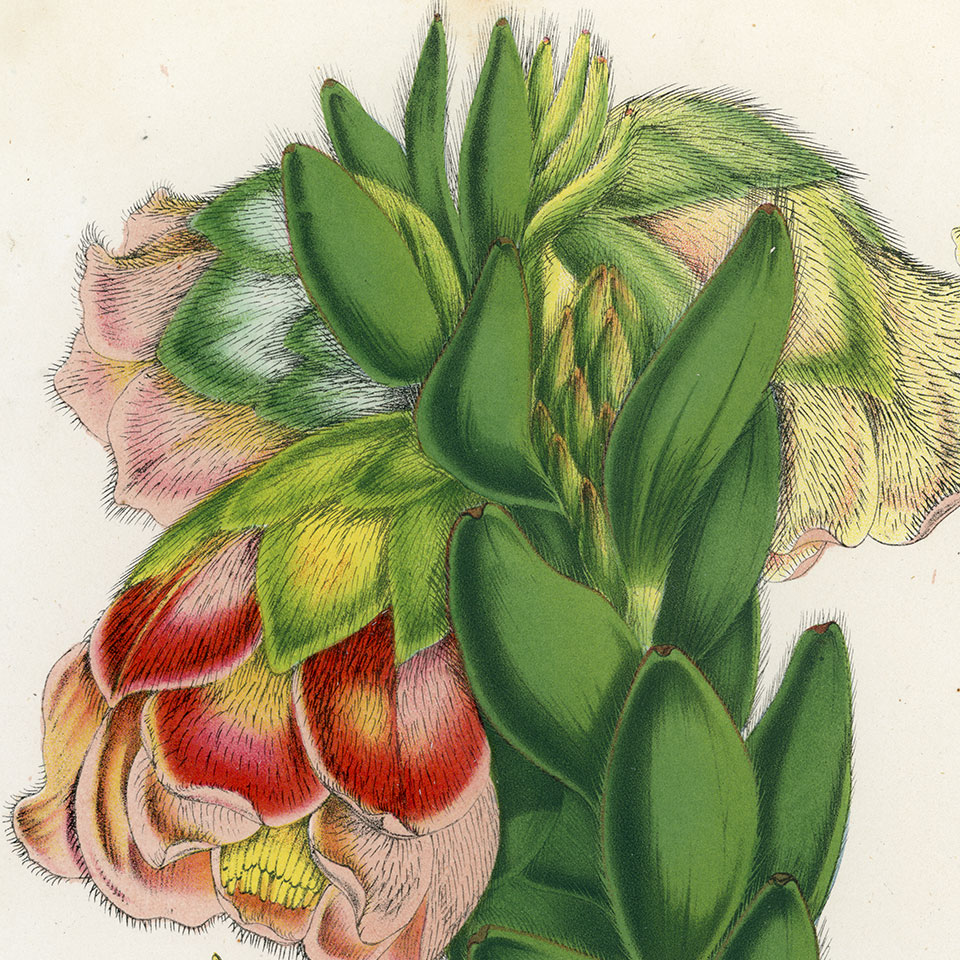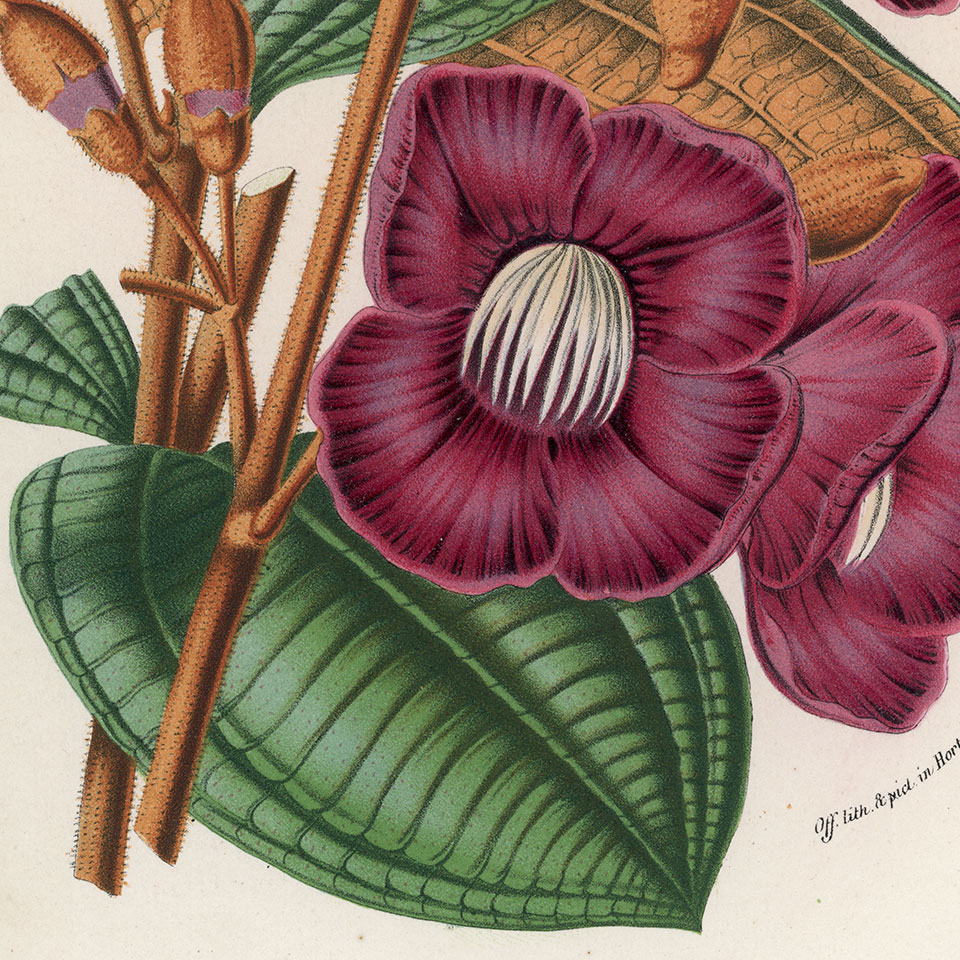Visual Ambrosia
Add the stunning beauty and calming effects of ambient video to your room’s decor.
Ambient video is a genre of video that puts emphasis on atmosphere over traditional storytelling or news content. Its singular purpose is to create a soothing, pleasant environment through the use of imagery, often accompanied by soft music. Ambient video can be the subject of a specific focus or alternatively run unobtrusively in the background.

PHOTO Visual Ambrosia | Our collection of chromolithographs offers a soothing and unobtrusive boost to the aesthetics of any decor. Enjoy them in the privacy of your home or share them with clients and visitors to your business.
What is Chromolithography?
Discovered in 1798 by Alois Senefelder, lithography was monochromatic. Its name is based on “lithos” for stone and “graphien” for writing. An image is applied to a porous limestone or zinc plate with a grease-based crayon or ink. Once the image is drawn onto stone, the stone is coated with a gum arabic solution and weak nitric acid, and then coated with water and inked with oil-based inks. Paper is placed on the inked image and run through a printing press to transfer the image to the paper using pressure.
Colors were later printed by drawing the area for each color on a different stone, and then printing the new color onto the paper. Each color in the image must be separately drawn onto a new stone or plate and applied to the paper one at a time. It was not unusual for 20 to 25 stones to be used on a single image. Each sheet of paper will pass through the printing press as many times as there are colors in the final print. Each print for each stone or plate had to be precisely registered, or lined up using register marks. This was not easy with manual methods. Chromolithography could take months to produce.
The many uses for our Chromolithographs
PHOTO Visual Ambrosia |
Because of its ability to transform spaces, ambient video is often used for meditation or relaxation. In addition to providing visual focus, ambient video can figuratively transport viewers to new locations and while it is often accompanied by music, sound is not necessary to enjoyment.
Although ambient video often serves as background art, its visual nature allows many uses:
- as a meditation tool
- to explore new locations
- as an aid for concentration or productivity
- to create atmosphere at home or in public places
- as a calming backdrop in homes or public places such as airports, hotels, hospitals, restaurants, shopping venues and more
“Visual Ambrosia’s Thematically Calming Ambient Video benefits businesses and viewers with endlessly changing vintage art animations.”
Interview with Michael Harris
Founder of Visual Ambrosia
Interview conducted by Alex Hager
AH: Michael, why don’t you begin with a brief background on your entrepreneurial journey so far.
MH: My entrepreneurial journey began unexpectedly some 30 years ago after practicing emergency medicine for 13 years. I went back to school at UC Berkeley, where I studied real estate development. Over time I developed a successful business of corporate furnished apartments and began collecting chromolithograph books as a side interest.
AH: How did you get the idea to establish Visual Ambrosia?
MH: My collection grew to 12,000 chromolithograph images and descriptions, viewable online at chromolithograph.com. One day when I was updating the website, a consultant animated a scan of one of the chromolithographs. It was something I had never seen before, sparking an “aha” moment as I realized how soothing and entertaining it is to watch zoom animations in ambient videos.
AH: Could you elaborate what ambient video is?
MH: In short, ambient video is a small, yet growing section of streaming video content available on a number of distribution channels such as Roku. Most of the videos are simple animations of scenic photography or slideshows of static art prints.
AH: So why have you chosen to animate chromolithograph scans?
MH: Chromolithograph scans, when animated, have a distinct value characterized by the way they were originally printed in layers. When you zoom in to a chromolithograph scan and animate it, the result is both abstract and beautiful. As an art source, chromolithographs have more dimension and potential for visual entertainment. With the right approach, they can generate hours worth of continually changing zoom magnifications.
AH: Where can someone view Visual Ambrosia videos?
MH: Visual Ambrosia videos are currently available as a subscription streaming service from Roku. New subscribers receive free viewing of 3 videos for the first month, then an additional collection of eight new videos every three months. For anyone interested in learning more about these services, they are detailed on our website visualambrosia.com.
AH: How do you see an evolution of Visual Ambrosia’s ambient videos?
MH: With the growing demand for ambient video in corporate and residential markets, we expect to see Visual Ambrosia videos displayed in public spaces such as waiting areas, airports, hotel lobbies, hotel rooms, private hospital rooms, and even emergency rooms or the lobbies of business office towers. They provide passive entertainment for anyone waiting in or moving through a public space. We also expect to be in residential spaces as homeowners seek to enhance the quality of life in their interior environments. The videos are so peaceful and calming.






